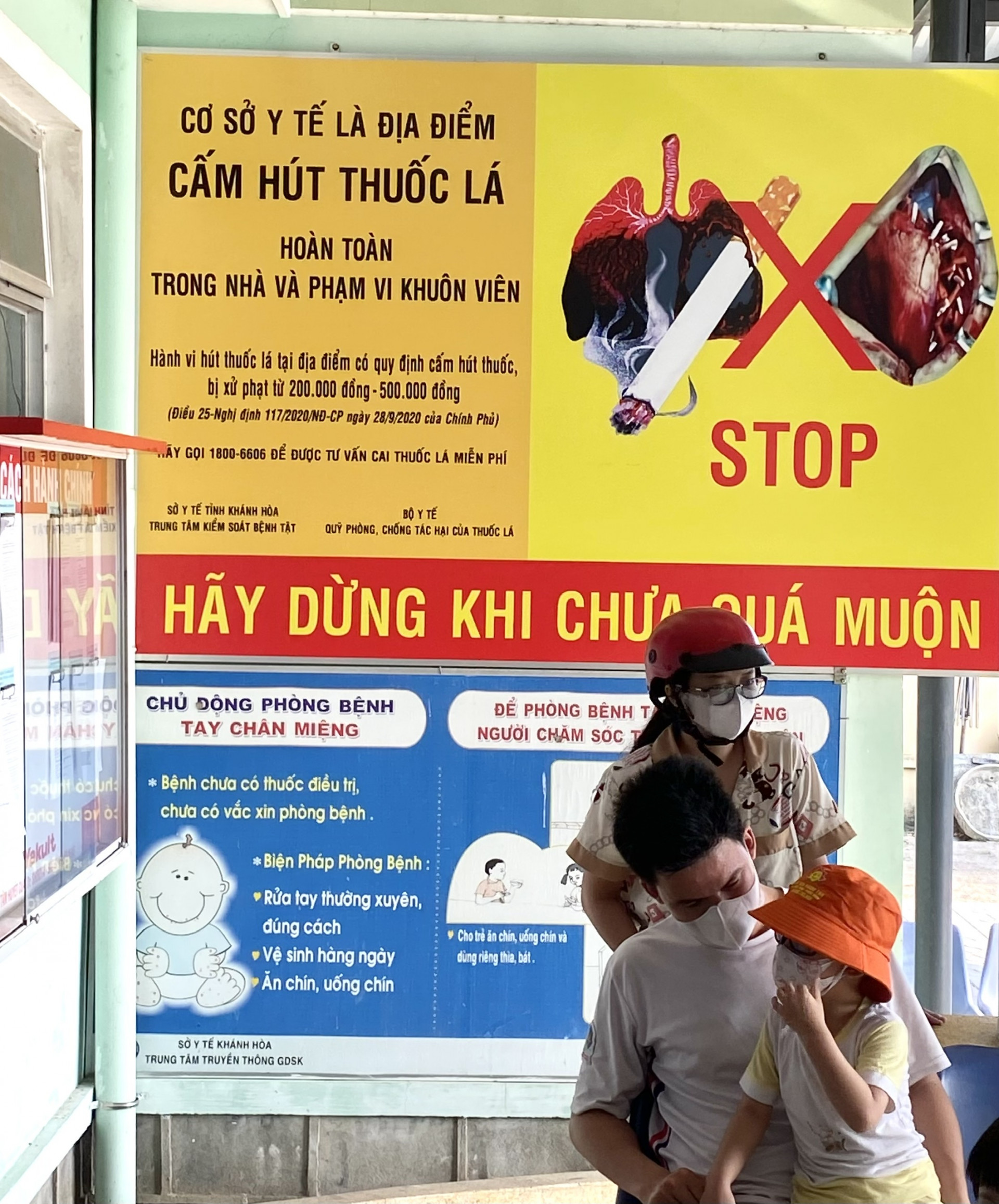The National Tobacco Control Strategy till 2030 approved by the Prime Minister in mid 2023 defines targets and solutions in efforts to reduce tobacco use.
Several solutions
The strategy is divided into 2 periods. In the 2023-2025 period, Vietnam aims to reduce the rates of smoking among males aged 15 and above to less than 39 percent and females aged from 15 to less than 1.4 percent.
The strategy also targets reducing passive smoking risks at work to less than 30 percent, restaurants to less than 75 percent, bars and cafes to below 80 percent, and hotels to below 60 percent. The strategy also aims to prevent the use of e-cigarette products, heated tobacco, shisha and other new tobacco products in public places.
In the 2026-2030 period, passive exposure rates will be further cut at workplaces, restaurants, bars and coffee shops and hotels by under 25 percent, 65 percent, 70 percent and 50 percent respectively.
 |
To fulfill the targets, the strategy sets out 7 tasks and solutions, including improving mechanisms, policies and the Tobacco Control Law; strengthening the leadership of Party committees and authorities at all levels and interdisciplinary coordination; boosting education and dissemination; strengthening inspection and handling of violations; promoting scientific research; and improving the surveillance system on tobacco control.
With a focus on a roadmap to increase taxes on tobacco products to ensure that by 2030 the tax rate will be in line with the proportion of the retail price as recommended by the World Health Organization; promulgation of regulations on the prevention of e-cigarette products, heated tobacco, shisha and other new tobacco products in the community; and the minors’ access to tobacco products under the WHO Framework Convention on Tobacco Control.
It also includes running anti-smoking propaganda in specific periods; enhancing the application of information technology and social networks in communication; strengthening the steering committees; and promulgating regulations on functions, tasks and coordination mechanisms among ministries, agencies and organizations from central to local levels to ensure effective tobacco control.
All community efforts mobilized
According to Dr. Ton That Toan, Deputy Director of Khanh Hoa Center for Disease Control, the strategy requires provinces and cities to strengthen the Steering Board for Tobacco Control with the participation of appropriate departments, agencies and socio-political organizations to ensure effective tobacco control; and develop annual programs and activity plans to implement the strategy.
Provinces and cities must include targets for reducing tobacco use in local socio-economic development targets for each period; Integrate tobacco control activities into plans; proactively mobilize resources and allocate an annual budget to meet the tobacco control targets; promote inspection and handling of violations; strengthen the integration of the above activities into the civilized cultural movements; and expand typical tobacco control models in the community.
Implementing the National Tobacco Control Strategy till 2030, the provincial Steering Committee for Tobacco Control has just issued the Tobacco Control Plan 2024 to raise public awareness of the harms of smoking and the benefits of a smoke-free environment; Tobacco Control Law; boost enforcement of smoke-free regulations; expand local addiction cessation models, etc.
C.D
Translated by N.T











Thông tin bạn đọc
Đóng Lưu thông tin